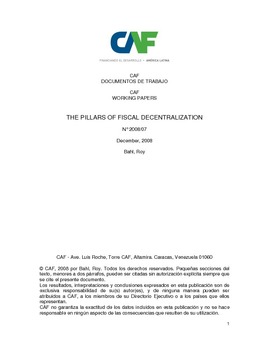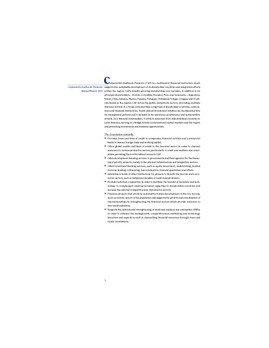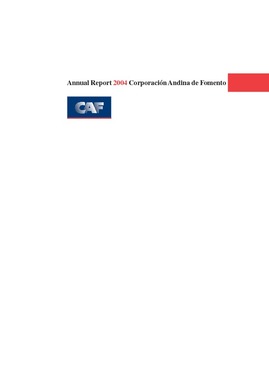The pillars of fiscal decentralization
Abstract
Fiscal decentralization can de be defined as the process of transferring budgetary authority from central government to elected subnational governments in order to grant them power to make decisions regarding taxes and expenses. This paper discusses, theoretically and empirically, what some consider the three pillars of fiscal decentralization: expenditure assignment, revenue assignment, and intergovernmental transfers. In the real world, almost all countries have these three pillars. However, there are no two countries alike because of the different possibilities at hand in designing a decentralized fiscal framework. Here, the international experience is studied to shed some light on the various institutional and practical issues arising in the design and implementation of fiscal decentralization. Not surprisingly, results vary widely, and this experience suggests that there are different ways of achieving a successful framework. Therefore, this paper intends to point and describe the key elements that contribute to achieving an effective decentralized fiscal framework that responds more efficiently to the demands of its constituencies.
Subject
Date
2008Cite this publication
Belongs to collection
Items Relacionados
Annual Report 2001
Despite facing an adverse international environment with negative repercussions for Latin America, CAF consolidated its position as the Andean countries’ ...
Annual Report 2004
This year yielded a generous recovery for Latin America’s economies. The dynamic performance of the world economy, the favorable conditions of commodity ...
Decentralizing Development: Evidence from Government Splits
Changes in political boundaries aimed at devolving power to local governments are common in many countries. We examine the economic consequences of ...






